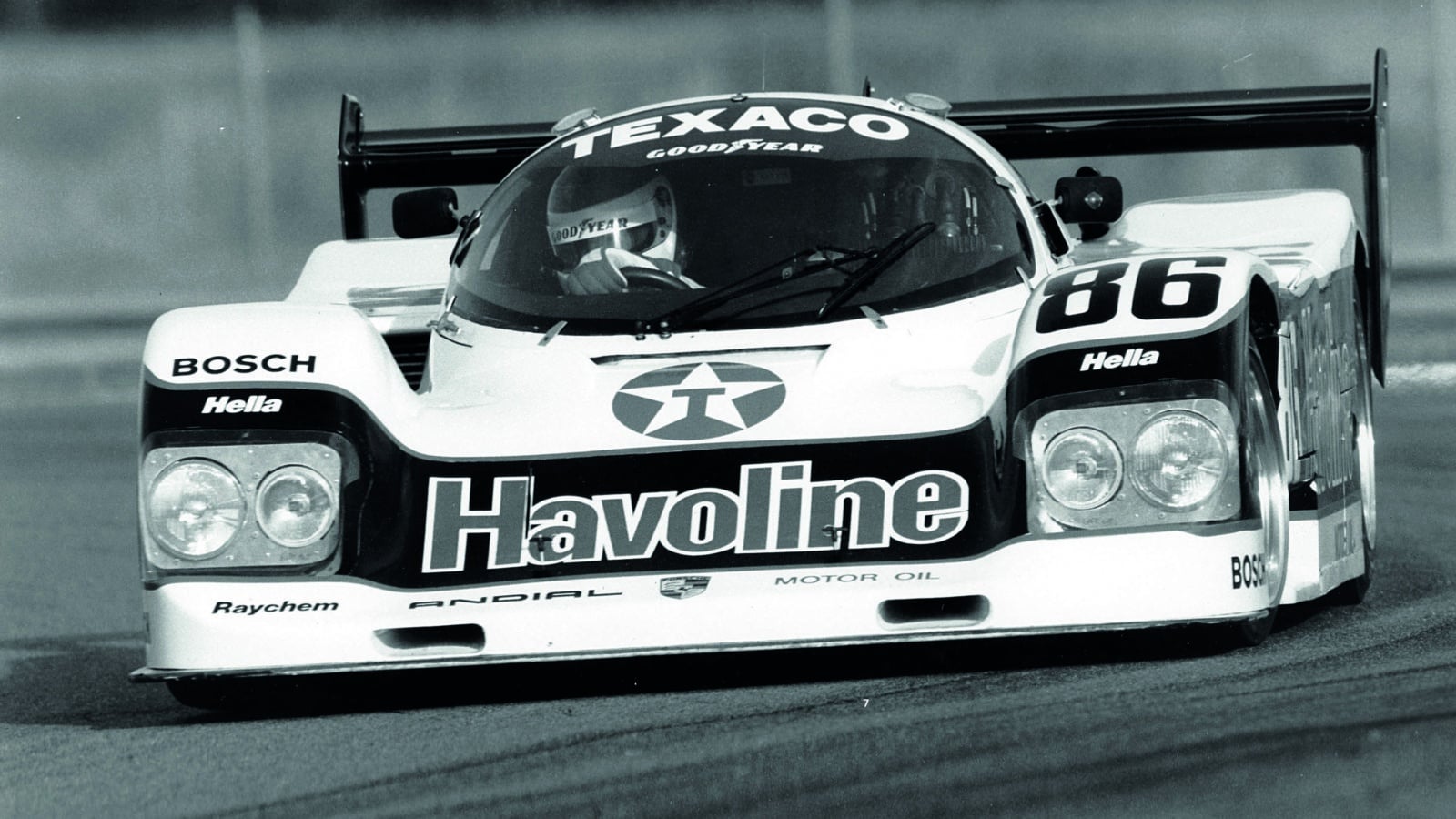How the 956 transformed into the 962
IMSA regulations called for a few design tweaks to Porsche's 956, leading to the creation of the 962

Bruce Leven Bayside 962, IMSA, late 1980s
The Porsche 962 was not initially designed as a Group C car. It was a response to IMSA refusing to allow the 956 to race, thanks to rules mandating that the driver’s feet be behind the front axle centre line. IMSA didn’t like the look of the 956’s multi-valve, twin-turbo, water-cooled motor either. For years IMSA had been dominated by private Porsches, or Porschepowered prototypes and they all had good ole-fashioned air-cooled, single-turbo, single-cam flat sixes.
But Porsche rarely lets details like regulations get in its way. “We knew they wouldn’t let the 956 race in IMSA, but that was fine because we designed it for Group C,” says Norbert Singer. “It was easy to make the changes needed. We had some aero issues with the shorter nose but we overcame those and the longer wheelbase actually helped.”
Porsche had an entirely eligible single-cam, single-turbo 12-valve air-cooled version of the flat-six engine already dominating IMSA in the 935. The driver’s feet issue was solved by extending the wheelbase by 121mm and lopping a commensurate amount off the nose to keep the car within permitted length, which is why, to many, the 956 is a far better looking car than the 962. The new car made its IMSA debut in 1984 and dominated the category for the next four years.

Daytona gold in 1989 and a win for the world’s fastest 962

